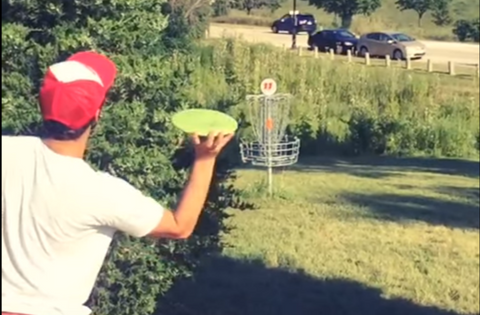 All aspects of your disc golf game are important, but when the phrase “drive for show, putt for dough” comes to mind, it brings to light the need to have your putting dialed in. For so many players, both touring professionals and amateurs, tournaments are won and lost with putts. Let’s review some of the more common types of putting styles and where they might serve you best. It’s never too late to try something new or add an extra element to your current routine!
All aspects of your disc golf game are important, but when the phrase “drive for show, putt for dough” comes to mind, it brings to light the need to have your putting dialed in. For so many players, both touring professionals and amateurs, tournaments are won and lost with putts. Let’s review some of the more common types of putting styles and where they might serve you best. It’s never too late to try something new or add an extra element to your current routine!
Hyzer Putting
Tons of players like to cash in on the benefits of a hyzer putt, where you release your putter on a hyzer angle. While it takes some getting used to, a hyzer putt can give you a little more control, as you know exactly how it will fade and land in the basket. Wide open shots are great for hyzer putts but beware – if you miss there’s a good chance your disc will roll.
Spin Putting
Utilizing the same type of wrist action as other shots, a spin putt is great for windy conditions or when you have to hit a lower line due to branches in your way. Imagine your putter shooting straight like a laser out of your hand and you have yourself a spin putt. Some players tend to always use this approach, but if your aim is a bit off, a spin putt can have a tendency to fly far past the basket.
Photo Source
Push Putting
Also called a pitch putt, a push putt involves less spin than a spin putt and takes on more of an arched line rather than a direct laser beam. With a push putt, you’re lobbing the disc in the air almost while mirroring the motion of a free throw in basketball. Push putting is great when you have a good look at the basket, but any obstructions or wind can send your disc in the wrong direction.

Spoosh Putting
You’ve definitely seen it but maybe didn’t know what it was called, but imagine a cross between a spin putt and a push putt. You release your disc with a decent wrist flick while sending it on a bit of an arc-like trajectory. Still a bit unclear? Just watch any footage of Steve Rico and you’ll get it. Sploosh putting works great if you have an unobstructed line and are putting within the circle.
Upside Down Putting
While it’s not a commonly used technique, putting upside down has its fair share of benefits. Some players always use this method when they are within 15 feet or so of the basket, as it allows for extreme accuracy, especially in windy conditions. Another benefit of an upside down putt? If you’re concerned about a roll-away, your disc will have a better chance of landing flat on the ground instead of catching on its edge.
Turbo Putting
A rather unusual way to hold your disc, a turbo putt involves sending your putter through the air with a type of overhand wrist flick. With your thumb in the center on the underside of your disc and your four fingers extended up around the rim, see if you can hit the chains. If you’re looking for some visual cues, JohnE McCray is a master of this putting style.
Forehand Putting
If you have a trusty sidearm and want to utilize it everywhere you can, you may be a fan of forehand putting. Just as it sounds, you send your disc into the chains using a forehand grip and arm motion. It can be useful if you have a tricky stance that requires you to navigate around a tree or bush, or if you just want to have a little fun from a close range.

Straddle Putting
You’ll see many players use a straddle approach to their putting, which has more to do with their legs than their arms. Instead of staggering your feet and using the momentum of a weight shift to help your putt, a straddle putt spreads your legs outside to side on an imaginary line. Some of the best putters in the world use this stance, and it can be great when you have an obstacle in your way.

Putting On One Knee
We all wish that each and every putt had a clear line to the basket, but sadly that’s not the case. In the instance of a lot of low branches that give you a small window, putting on one knee can help you to make the shot. Obviously, you can’t get as much momentum from your body, so this style requires you to really spin the disc to get the distance you need.
What’s your favorite style of putting? Share with us in the comments below the method that works best for you!











Leave A Comment